![]()
![]()
![]()
Use LEFT and RIGHT arrow keys to navigate between flashcards;
Use UP and DOWN arrow keys to flip the card;
H to show hint;
A reads text to speech;
87 Cards in this Set
- Front
- Back
|
Define Nomad
|
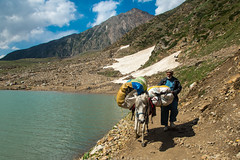
Traveling people with no permanent home who usually follow sources of food and/or water.
|
|
|
Define Fertile
|
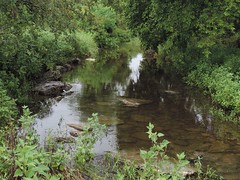
Capable of producing vegetation; abundantly productive.
|
|
|
Define Resources
|
A supply that can be readily drawn upon when needed.
|
|
|
Define Polytheism
|
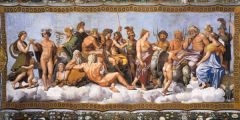
Believing in more than one god.
|
|
|
Define Revolution
|
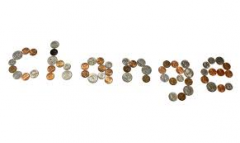
A sudden, complete, or marked change in something.
|
|
|
Define Domesticate
|
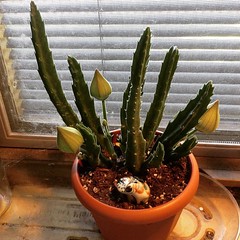
To tame animals and adapting crops for human use.
|
|
|
Define Archaeologist
|
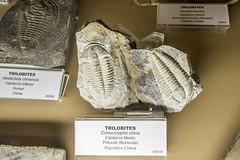
A scientist who studies artifacts and fossils to better understand ancient history.
|
|
|
Define Anthropologist
|
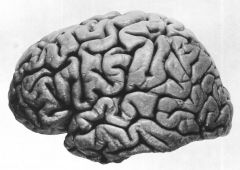
A scientist who studies ancient people's origins, behavior, and physical, social, and cultural development. |
|
|
Define Fossils
|
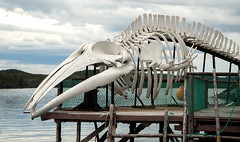
Any remains or traces of a living thing of a former geological age. |
|
|
Define Hominids |
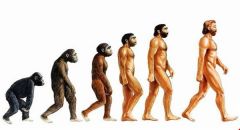
Early humans and humans who walk upright; believed to be the ancestors of humans. |
|
|
Define Metallurgy
|
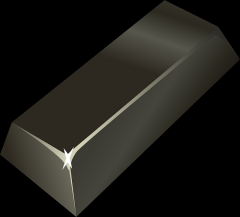
The technique of heating and working metals. |
|
|
Define Innovation
|
Something new or different.
(Tip: Innovation that Excites from Nissan (all rights reserved) is a good way to remember this) |
|
|
What is the Paleolithic Era also known as?
|
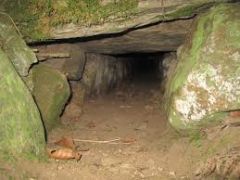
The Old Stone Age |
|
|
How old is the Paleolithic Era?
|
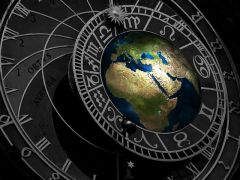
2.5 million years ago to 10 thousand years ago.
|
|
|
What kind of people lived in the Paleolithic Era?
|
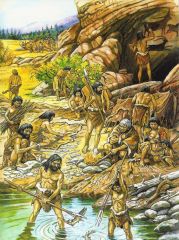
Hunter-Gatherer Nomads |
|
|
What kind of tools did Paleolithic people use?
|
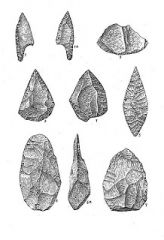
Chipped Stone Tools
|
|
|
What is the ideal number of people in one group for a peaceful society with no in-fighting?
|
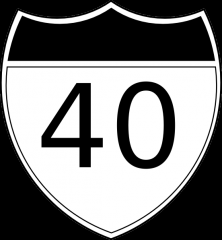
40
|
|
|
What language did Paleolithic people use?
|

Spoken Language NOT Written Language |
|
|
Are there cave paintings in the Paleolithic Era?
|
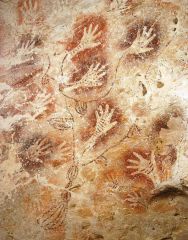
Yes
|
|
|
What kind of tools and weapons did the Paleolithic people use? |
Stone, bone, and probably wood.
|
|
|
Where is 'the starting point of humanity?'
|
Africa
|
|
|
Where was Lucy found?
|
Ethiopia
|
|
|
Who was Lucy found by?
|
Donald Johanson & Maurice
|
|
|
When was Lucy found?
|
1974
|
|
|
What species is Lucy?
|
Australopithecus Afarensis
|
|
|
How old are Lucy's remains?
|
3.2 million.
|
|
|
What makes Lucy special?
|
She stands erect! (Bipedal)
|
|
|
When was Neanderthal Man's skull found?
|
August 1856
|
|
|
Where was Neanderthal Man's remains found? |
Neanderthal Cave
|
|
|
What were the men who found Neanderthal Man's skull looking for originally?
|
Limeston
|
|
|
About how long ago did Neanderthal Man live?
|
50 thousand years ago
|
|
|
What book did Charles Darwin write? |
The Origin of Evolution
|
|
|
What one species did Darwin leave out when saying that all living things evolved from something simpler? |
Humans
|
|
|
What is the Missing Link's theory? |
The theory that the evolution of man went from ape to the Missing Link to humans, with nothing in between.
|
|
|
What is the Missing Link? |
A combination of humans and apes.
|
|
|
How long did it take for most people to stop believing in the theory of the Missing Link? |
The 1960s
|
|
|
Who introduced Piltdown Man?
|
Charles Dawson |
|
|
What is so special about Piltdown Man? |
He is a hoax
|
|
|
Where was Piltdown Man found? |
Britain
|
|
|
Why did Europeans want to believe Piltdown Man was the Missing Link?
|
Because British wanted their country to be more important back then and no other significant fossils had been found in Britain.
|
|
|
Who found Zinj?
|
Louis and Mary Leakey
|
|
|
When was Zinj found?
|
1959
|
|
|
Why was Louis and Mary Leakey looking for Zinj?
|
They had found tools at the dig site and not the maker of them.
|
|
|
Where was Zinj found? |
Tanzania
|
|
|
What other significant find did Louis and Mary Leakey make? |
Homo Habillis
|
|
|
What does Habillis mean? |
"Handy Man"
|
|
|
Which was the real toolmaker, Homo Habillis or Zinj? |
Homo Habillis |
|
|
Why was Lucy named Lucy?
|
The Beatles song 'Lucy in the Sky with Diamonds' continuously played at the dig site when Lucy was found.
|
|
|
When was Homo Habillis found? |
1960
|
|
|
Where was Java Man found? |
Java Island
|
|
|
Who was Java Man found by?
|
Eugene Dubois (pronounced Doobwah; the second 'e' is accented) |
|
|
Where else did Dubois look for ancient skeletons? |
Sumatra
|
|
|
Who is credited for Taung Child? |
Raymond Dart
|
|
|
Why did nobody believe Taung Child could be the Missing Link? |
Enamored with Piltdown Man
|
|
|
Where is Raymond Dart from?
|
Aulstralia
|
|
|
What species is Taung Child?
|
Australopithecus Africanus
|
|
|
What is human evolution more like than the Missing Link theory?
|
A tree
|
|
|
What is the Great Migration? |
The movement of ancient people out of Africa.
|
|
|
Why did ancient people leave Africa during the Great Migration?
|
Food and water; Nomadic purposes
|
|
|
What made the Ice Age important for the Great Migration (ancient)?
|
The Bejing Strait froze over and became passable, and afterwards trapped people when the Bejing Strait melted. |
|
|
What was the Bejing Strait during the Ice Age?
|
A land bridge.
|
|
|
What is considered the most important landform for early civilizations? |
Rivers
|
|
|
What is water for?
|
Hydraulic Engineering, Agriculture, Hygiene, Authority, Art, Religion, Wealth, Survival (Many things) |
|
|
What is the Neolithic Era also known as?
|
The New Stone Age
|
|
|
How long ago was the Neolithic Era?
|
10 thousand years ago.
|
|
|
What kind of tools did the Neolithic people use?
|
Polished and grinded stone.
|
|
|
What did the Neolithic people depend on?
|
Domesticated plants and animals.
|
|
|
What kind of people lived in the Neolithic Era?
|
No longer nomads,people who lived in permanent settlements. |
|
|
What did Neolithic people develop?
|
Pottery and Weaving
|
|
|
What was different about Neolithic weaving?
|
They did not use a loom.
|
|
|
When did the Agricultural Revolution take place?
|
In the Neolithic Era
|
|
|
What does the Agricultural Revolution refer to?
|
The discovery of farming.
|
|
|
How long did it take most groups of ancient people in the Neolithic Era to fully rely on farming for survival? |
200 to 400 years
|
|
|
What are some side-effects that came out of the Agricultural Revolution?
|
Better nutrition, population increase, permanent settlements, domestication of plants, land ownership and conquering, trade of extra/surplus food, law & government, division of labor, slavery, change of environment. |
|
|
What effect did metallurgy have on the Stone Age?
|
The Stone Age ended and became the Bronze Age.
|
|
|
Which two significant metals came first in time?
|
Copper, then bronze.
|
|
|
What is bronze made of?
|
A mix of copper and tin.
|
|
|
What religion did Stone Age people probably believe in? |
Animism ; The belief that all things in nature have spirits.
|
|
|
Define Animism |
The belief that all things in nature have spirits.
|
|
|
What two things did Stone Age people likely believe in? |
Animism and life after death
|
|
|
What, other than animism, did Stone Age people likely believe in?
|
Life after Death
|
|
|
What did ancient people begin practicing once settlements became permanent?
|
Creation and more organized rituals.
|
|
|
What did early governments probably do?
|
Farm
|
|
|
Why was early government usually formed because of farming? |
Managing a growing population took lots of planning.
|
|
|
What belief did most rulers control under?
|
The Belief of Divine Right (Having the blessing of the God or Gods)
|
|
|
If the ruler did not control under the Belief of Divine right, what similar religious reason might a ruler be in control because of? |
They claim to be the child of the God or Gods.
|
|
|
When is polytheism more popular, ancient times or present times?
|
Ancient times.
|

